
From Manhattan to Moonshadow, Don't Sleep on These 12 Vibrant Euonymus Cultivars
Published: 10/04/2024 | Updated: 11/06/2024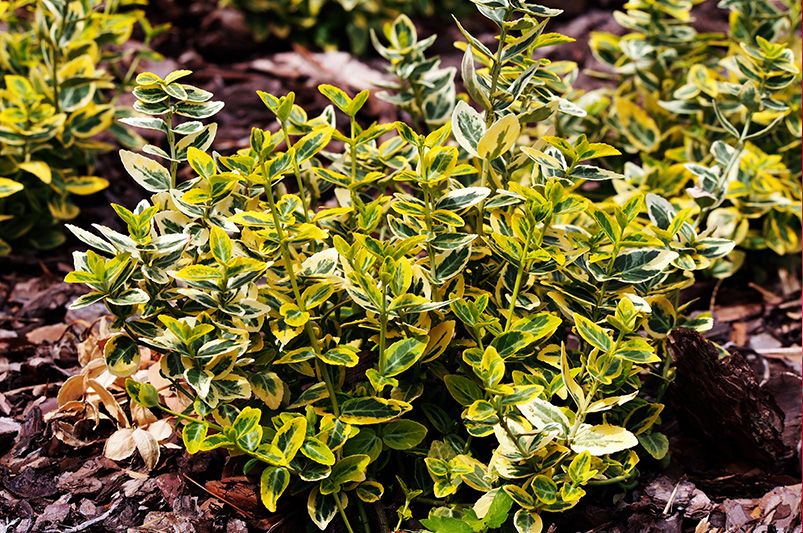
A genus of flowering shrubs with deciduous or evergreen foliage, Euonymus, sometimes known as spindle tree, comprises over 140 species and multiple cultivars. It is typically found in low woodland areas or mixed deciduous woods in the wild.
The shrub may be cultivated in a broad range of soil types, including clay, and it can withstand some degree of drought and wetness in the soil. Birds and tiny mammals consume fruits and seeds. For optimal results, plant in a naturalized woodland area.


The plant has simple, opposing leaves. Certain varieties are planted primarily as ornamentals because of their striking red foliage in the autumn and early winter. The flowers are four-parted, tiny, and frequently have a greenish-maroon hue. A reddish-pink, ivory-to-yellow capsule that cracks to release orange-red seeds follows the flowers in the autumn. An easy-growing shrub, it has the potential to become an invasive species.
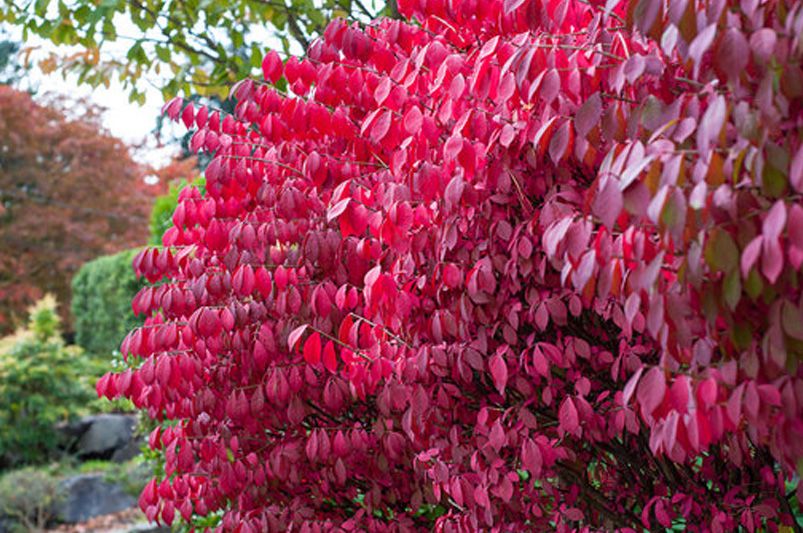
Chicago Fire Burning Bush
Excellent for home landscaping use, this shrub has a compact, mounded growth habit, intriguing corky wings on the branches, and a stunning fall color that develops into a fluorescent red color. It is also quite versatile and adaptable.
Burning Chicago Fire The main reason bushes are produced is for their very beautiful fruit. It has a large number of eye-catching crimson capsules throughout the early to late autumn. Rich green deciduous foliage covers it. In the autumn, the sharp leaves turn an amazing shade of scarlet. The harvest gold branches and warty brown bark are quite striking and provide a great deal of winter interest.
This bush is a deciduous plant with several stems and a roughly rounded shape. Although its typical texture blends into the surroundings, one or two rougher or finer trees or bushes might counterbalance it to create a balanced composition.
This shrub requires very little upkeep and is pruneable whenever you like. It doesn't have any noteworthy drawbacks. It will mature to a height of approximately 9 feet and a width of 7 feet. It can be planted under power lines because it tends to fill in right to the ground, negating the need for facer plants up front. It has a moderate growth rate and, in perfect circumstances, can live for at least fifty years.
In full sun or full shade, this plant thrives. It should thrive in typical home landscape circumstances as it is highly tolerant of both dry and wet environments. It doesn't care about the pH or type of soil. It may even flourish in inner-city settings and has a high tolerance for pollutants from cities.
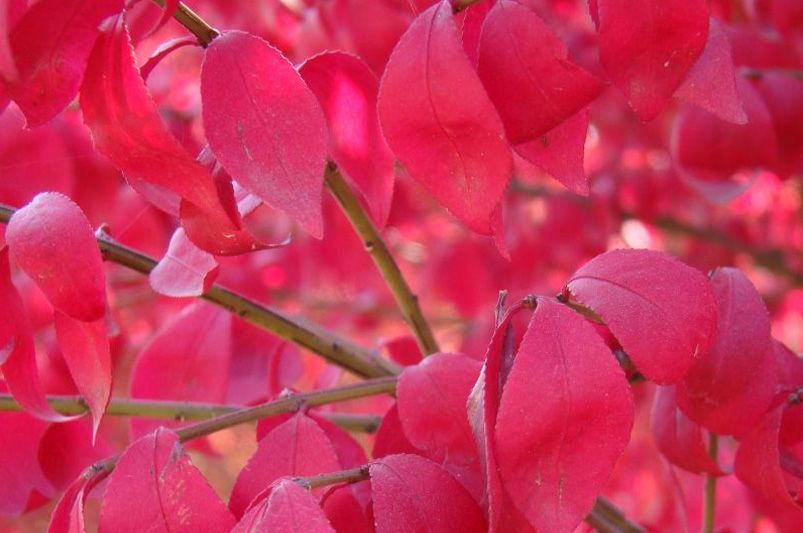
Compacta Burning Bush
With striking strawberry bush-like hues of scarlet fall that grab your attention, the popular Compacta Burning Bush (Euonymus alatus 'Compactus') gleams brilliantly. Think of this lovely shrub as the autumn color industry's rock star.
A shorter kind of Burning Bush called Compacta grows lovely, lush foliage to the ground. This shrub is prized for its spectacular annual display of autumn color, which is a fiery red hue. You will understand why it's referred to as Bushing Bush.
You'll enjoy vibrant, three-inch-long green leaves from spring to summer. The moment you've been waiting for finally arrives. The fiery display of brilliant red fall color starts as soon as the nights grow colder. It lasts forever, adding a lovely touch to your sports watch parties and cool autumn evenings spent by the fire pit.
Full-sized Burning Bushes have corky ridges on their stems that show as the leaves fall. The shrub's exquisitely textured bare branches provide winter interest. (The Latin term for "winged" is alatus.) Throughout the winter, even the lovely branch structure truly pops!
Mature shrubs can grow to be 6–8 feet tall and 4-6 feet wide. They are hardy in USDA growing zones 4–8. In April, pollinators love the tiny yellow blossoms that you might not be able to notice.
Emerald 'n Gold Wintercreeper
Euonymus fortunei 'Emerald 'n' Gold' (Wintercreeper) is a low-growing, broadleaf, evergreen shrub with a spreading habit that is well-known for its vivid and appealing foliage. In the autumn and winter, it produces a thick, bushy mat of glossy, ovate to elliptic, dark green leaves with a pink tinge and a gold border. In early June, it develops a few small, barely noticeable greenish flowers.
It reaches a height of 1-2 feet (30-60 cm) and a spread of 3-4 feet (90-120 cm). Wintercreepers are spread by seeds carried by animals or water, as well as by creeping stems that root when they come into contact with the ground.
In most of the eastern half of the United States, euonymus fortunei has been documented to be invasive in natural places. This plant can grow easily on ordinary, medium-moisture, well-drained soils and can tolerate full sun to full shade. If your soil retains moisture, grow in full sun. Accepts a large variety of soil types, but not wet or muddy ones.
Euonymus fortunei is a very adaptable plant that can be used as a foundation plant, a low hedge, an edging plant along a path, or in a masse on a slope to reduce erosion. It climbs vigorously when supported, and it is best trained against a wall that receives shade.
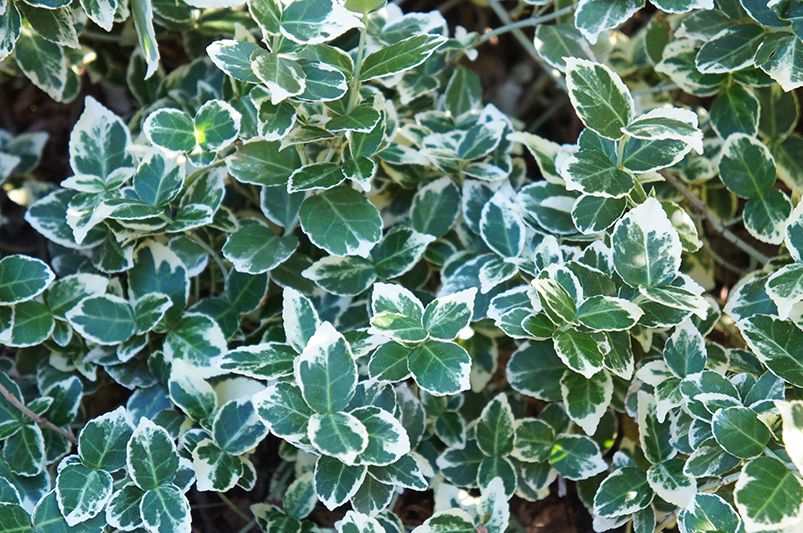
Emerald Gaiety Euonymus
Euonymus fortunei, popularly known as wintercreeper euonymus, is a cultivar of broadleaf evergreen shrub known as "Emerald Gaiety." The hardy plant known as "Emerald Gaiety" can withstand urban pollutants and drought. Identifying as a shrub or bush, it grows in a mounding manner with spreading, erect branches that bear tiny red berries and blue-green leaves that are variegated when planted in partial shade. The leaves have white rims and serrated edges. Fall and winter months may see a hint of pink on the leaves.
This shrub grows slowly; it will grow one to two inches a year until it reaches its mature height of five feet and its mature width of the same. Like other plants in the Euonymus genus, this one is harmful to both people and animals. In the eastern United States, "Emerald Gaiety" can potentially become invasive.
If regularly pruned, "Emerald Gaiety" can be planted as an informal hedge or screen. However, if you let it grow uncontrolled, it can also be cultivated as a vine or ground cover. It is planted in large quantities as a ground cover, allowing its drooping branches to progressively engulf an area as they establish roots anywhere they come into contact with the earth. You'll need to support it and be ready to train the branches and secure them with tape or twine if you want it to grow into a vine.
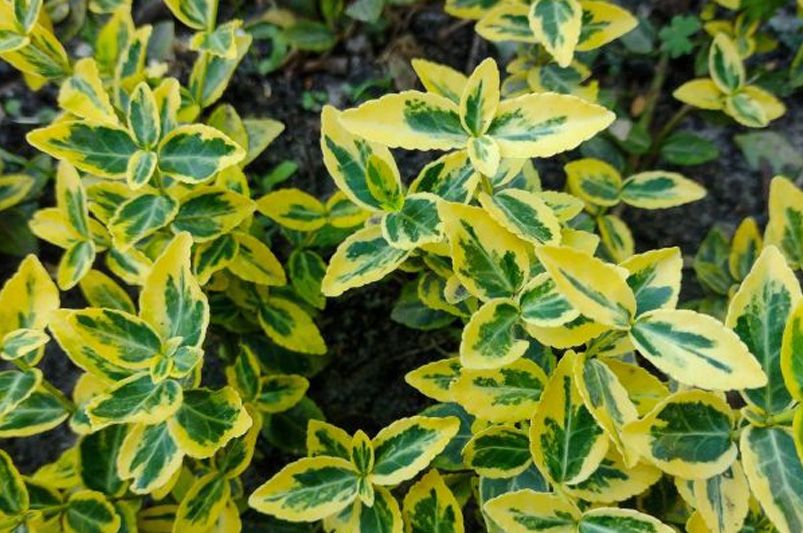
Gold Splash Euonymus
This golden euonymus plant is a very striking color all year long, this variety features large, rounded leaves with vivid, striking variegation. Compared to other, older types, it has a significantly greater impact on the landscape. The plant exhibits exceptional resilience to disease including the euonymus scale, and the variegation is quite stable. For a simple four-season color in the landscape, use Gold Splash. Exuberant, variegated foliage holds its color throughout the year, with bold, enduring fruit adding a pop in the autumn. Gold Splash is a dependable, flexible option for most settings, and it has outstanding hardiness.
Because it is an evergreen, the leaves stay vibrantly colored throughout the winter. It's perfect for borders or large-scale plantings and easily fits into confined areas on sidewalks.
Tolerant of most soils, except very moist ones. pH-adaptable, it withstands heavy pruning. prune at any time, although late autumn is the ideal time to do so. Any moment is a good time to cut away that occasional green branch. favors a moderate moisture level. Apply a slow-release fertilizer designed specifically for trees and shrubs in the early spring. The recommended rate of application is listed on the label.
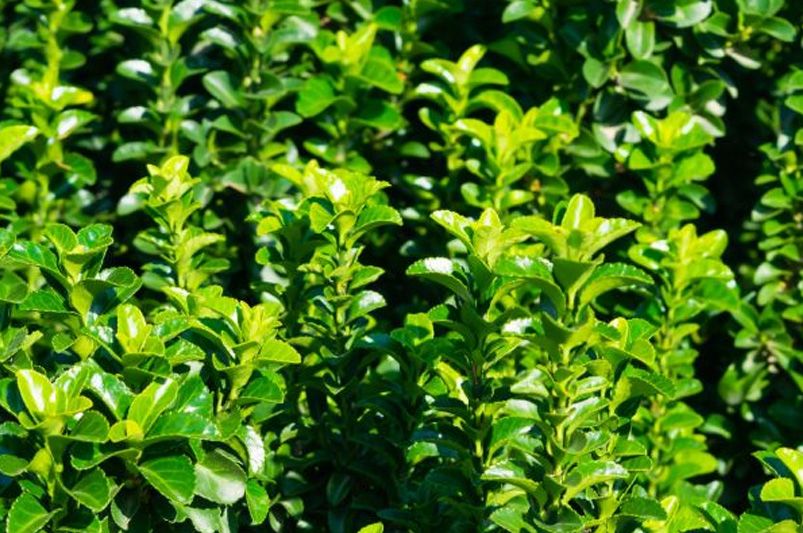
Green Lane Euonymus
Bright, evergreen, and adaptable shape, the Green Lane Euonymus (Euonymus fortunei 'Green Lane') can grow as a groundcover, bushes, or even as a climbing vine! This workhorse evergreen is incredibly adaptable to the environment and will establish itself as a graceful, steady presence in your sun gardens.
Made up of compact, glossy, dark-green leaves, these small, oval, broadleaf evergreens are incredibly adaptable! These chameleons, which are 4-5 feet wide and 3-4 feet tall, can be trained to climb, clipped into rounded, bushy bushes, or allowed to creep and sprawl along the ground, covering everything in greenery!
Your fall pollinators and songbirds will be spoiled with a feast of inconspicuous blooms and orange berries! Throughout USDA growth zones 5 to 9, the purple fall color persists throughout the winter, and the green foliage is resistant to heat, sun, and cold!
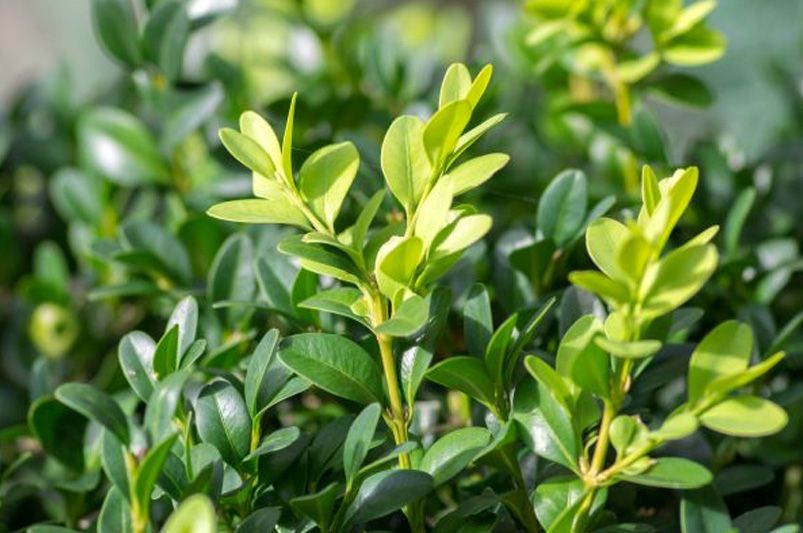
Green Spire Euonymus
The hard-working superb looks of Euonymus japonicus 'Green Spire' will win you over! Robust broadleaf evergreens are a staple in great landscape design, adding color all year round. Green Spire Euonymus is a year-round performer that is incredibly adaptable. They develop into a slender, glossy green column. Tiny leaves capture the available illumination. It should not come as a surprise when sunshine flashes across this ostentatious "workhorse".
A lovely contrast to the mature dark green foliage is provided by the lighter green new leaves that have emerged. The small spring blossoms are probably invisible to you, but helpful pollinators will undoubtedly detect them. You should be happy that you choose to help the local ecological!
Robustly upright branches are positioned nearly vertically, giving the scenery a dynamic appearance. These incredibly versatile columnar evergreens, which measure 6-8 feet in height and 1-2 feet in width, are hardy in USDA growing zones 6 to 9.
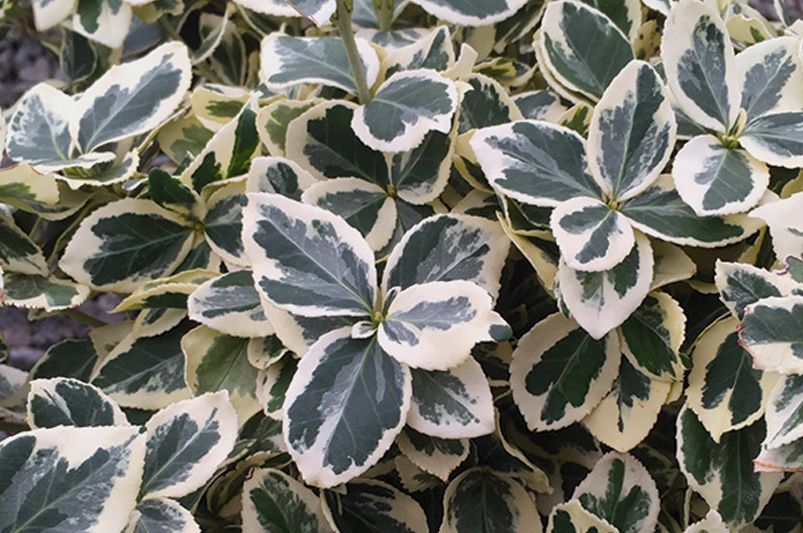
Ivory Jade Wintercreeper
The monochromatic look is so passé; add some flair to your broadleaf evergreen collection with the Euonymus Wintercreeper (Euonymus fortunei 'Ivory Jade') in ivory! This shrub has gorgeous green leaves with ivory-white edges, just as its name implies.
Nor is Ivory Jade very timid! The sheer volume of leaves this plant yields will enchant you. It appears as though these leaves have a persistent layer of snow dusting around their tips. It appears to be a beautifully finished Pinterest project!
Throughout the year, chop off a few stems for your indoor arrangements. Ivory Jade leaves start to turn pink as winter approaches, rather than maintaining their traditional hues. providing a pleasing contrast with the deep green foliage. Hardy in USDA hardiness zones 4 (cold) to 9 (hot and humid), these plants can reach a width of 5 to 6 feet but only reach a height of 2-3 feet.
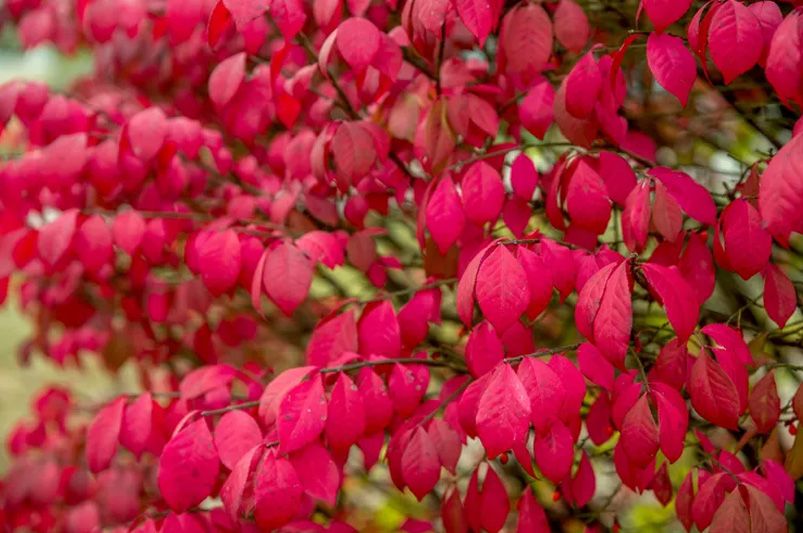
Little Moses Burning Bush
Despite its appearance, Euonymus alatus 'Odom', often known as the Little Moses Burning Bush, is anything but a common low-lying shrub! You won't want to miss the amazing display that occurs in your yard when you plant one of these small Burning Bushes in the autumn!
Every spring, this deciduous shrub produces a dense canopy of small, pointed, light green leaves. It will continue to be appealing during the summer, but autumn is when the real show begins! Though the small yellow-green blooms may not be visually appealing, they will attract chubby bumblebees and other pollinators due to their abundance of nectar and pollen!
This bush turns the most vibrant red as the air gets chilly and your thoughts move to campfires and smores. It will take your eyes to truly appreciate how much colour this little bush's leaves can hold!
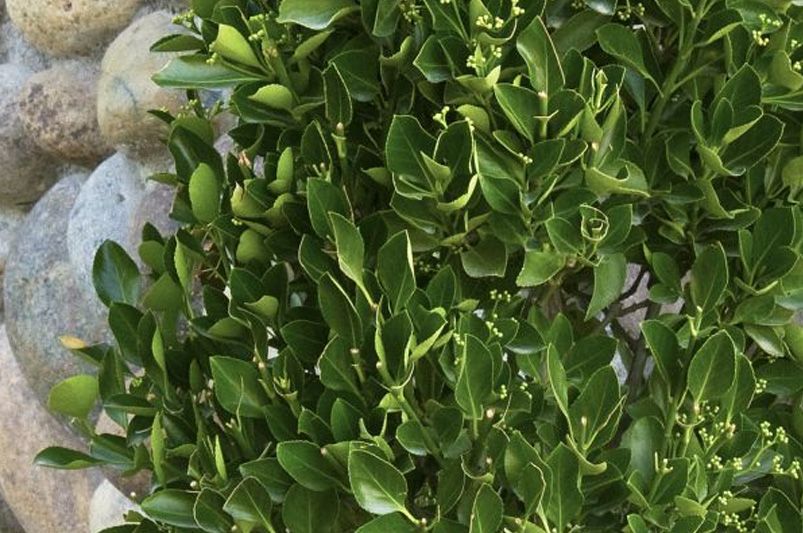
Manhattan Euonymus
A. Kiautschovicus Euonymus Spreading euonymus, or Euonymus kiautschovicus, is another name for the cultivar known as "Manhattan." The parent plant is a rounded, 8–10 foot-tall broadleaf evergreen (or, occasionally, semi-evergreen). The 'Manhattan' cultivar grows to be 4–6 feet tall and 3–5 feet broad, making it a smaller version of the parent.
The cultivar has spherical, erect leaves that are 2 1/2 inches shiny. It belongs to the staff-vine or bittersweet family and was developed in Manhattan, Kansas, which is where the name originated. Be aware that in zones 5 and 6, it might not be evergreen. This plant's glossy green leaves are not the only attractive characteristic; its pink fruits add to its overall appearance.
Except for moist soils, the 'Manhattan' cultivar can tolerate a wide range of soil types and can thrive in both full sun and moderate shade. The plant can be used as a hedge, specimen, or in foundation plantings due to its decorative qualities.
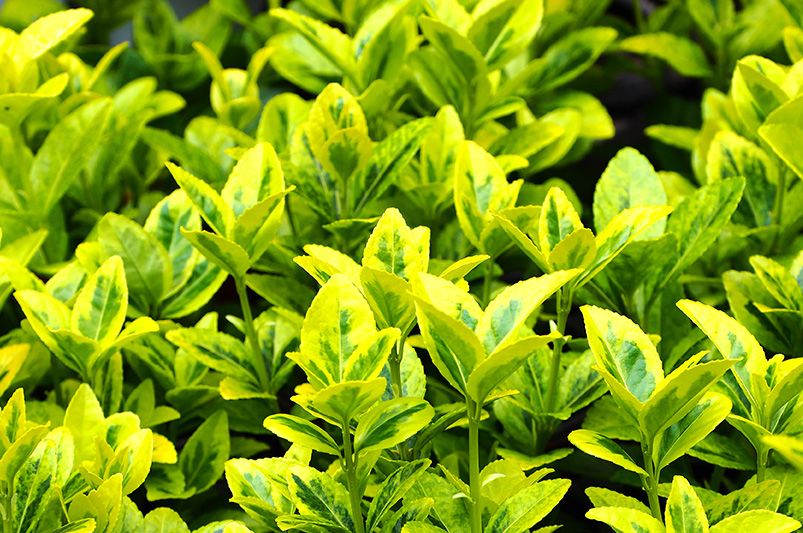
Moonshadow Euonymus
Despite its small size, Euonymus (Euonymus fortunei 'Moonshadow') is a very charming tiny shrub! Its broadleaf evergreen characteristics guarantee that you'll love its beauty all year long, and compared to other little evergreen euonymus plants in your landscape, the attractive foliage will be a bonus!
The greenery will become instantly apparent to you when you view your Moonshadow. Every oval, serrated leaf has a glossy green border surrounding a golden center. The yellow seems more subdued when the leaves are young and darkens as they age. Your Moonshadow will look slightly multi-toned as a result, making it stand out against your summer environment!
Pollinators will seek out the tiny, greenish-yellow blossoms that appear in the spring, but they won't be particularly spectacular. Your Moonshadow stems turn scarlet as fall sets in, and the euonymus foliage turns pink. This evergreen shrub has a somewhat rounded form and stays low to the ground. It is dense and compact.
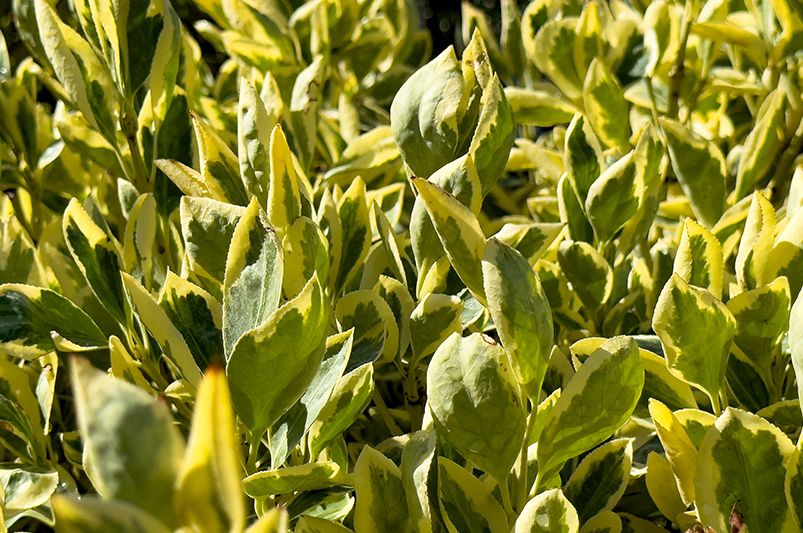
Silver King Euonymus
Any landscape would benefit from the Silver King Euonymus. Like the silver queen variety, the exquisite variegated leaves of this plant make it much sought after. It can go with almost any style! This shrub can produce berries in the winter. Additionally, this plant is highly tolerant to low soil types.
Plant your Silver King Euonymus in either partial shade or full sun. These resilient bushes may thrive in almost any soil that can drain. Water this Euonymus thoroughly once or twice a week after planting to ensure healthy root growth. Once established, this plant can withstand some drought. Generally speaking, watering is only required during severe droughts.
Mulch should be used in two to three inches to assist in keeping the soil moist and protect the roots from high temperatures. This shrub doesn't require any pruning. However, you can prune at any time of year if you like a more manicured appearance. Use our slow-releasing, balanced fertilizer in the spring. This Silver King Spindle tree can withstand heat, pollution, and salt.
Plant Your Dreams with ShrubHub's Green Thumbs!
Euonymus plants offer a delightful array of options to elevate your outdoor space with their vibrant colors and easy maintenance. From the fiery hues of Chicago Fire Burning Bush to the elegant variegation of Gold Splash Euonymus, there's a variety to suit every garden style and preference. As you plan your landscaping projects, consider consulting with the experts at ShrubHub. With their wealth of knowledge and experience, ShrubHub landscaping experts can provide personalized advice and guidance tailored to your specific needs. Whether you're unsure about which Euonymus variety would thrive best in your garden or need tips on proper planting and maintenance, professionals are here to help. Don't miss out on the opportunity to transform your outdoor space into a vibrant oasis with Euonymus plants. Reach out to ShrubHub today and let their experts assist you in creating the garden of your dreams!


